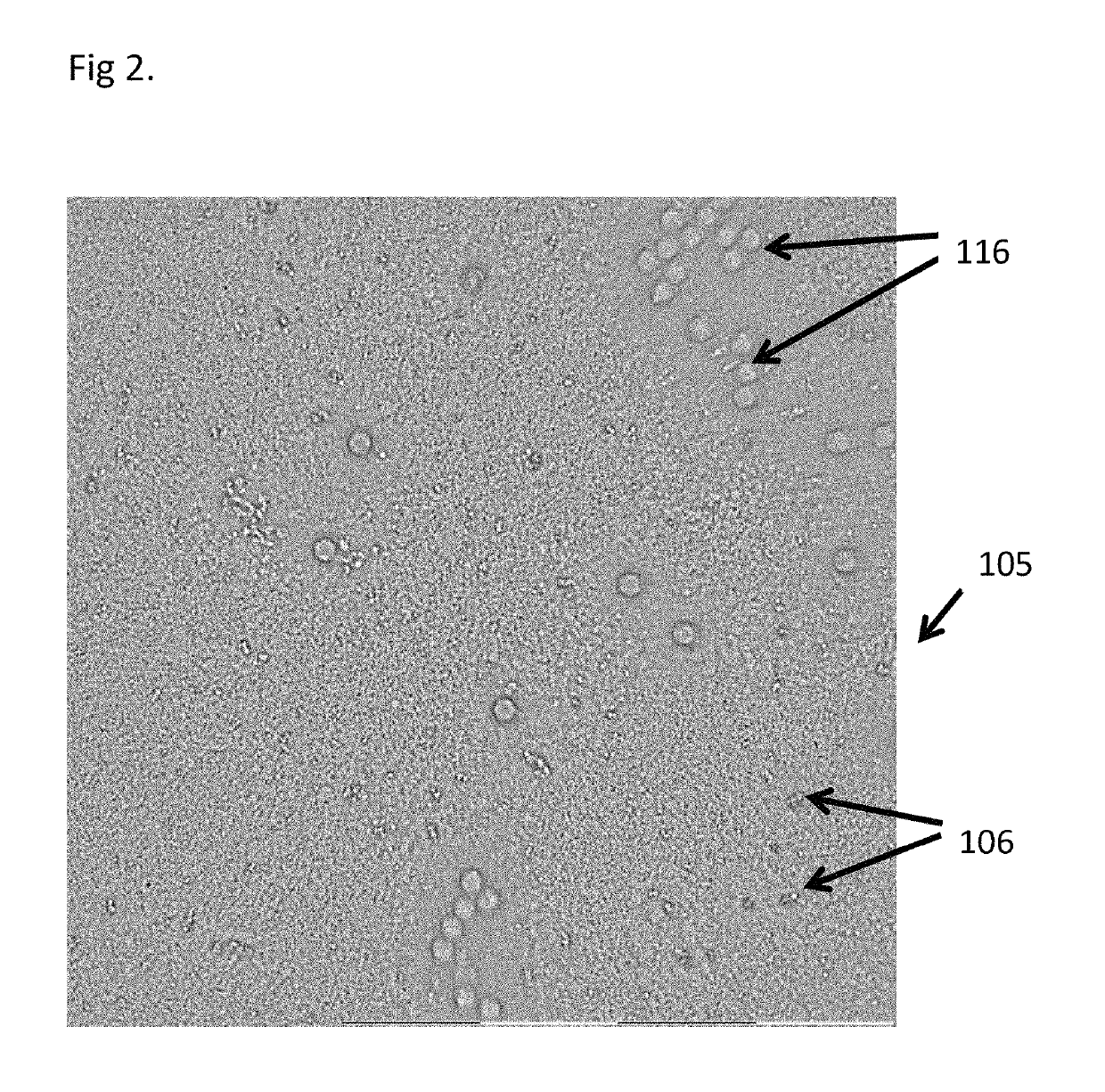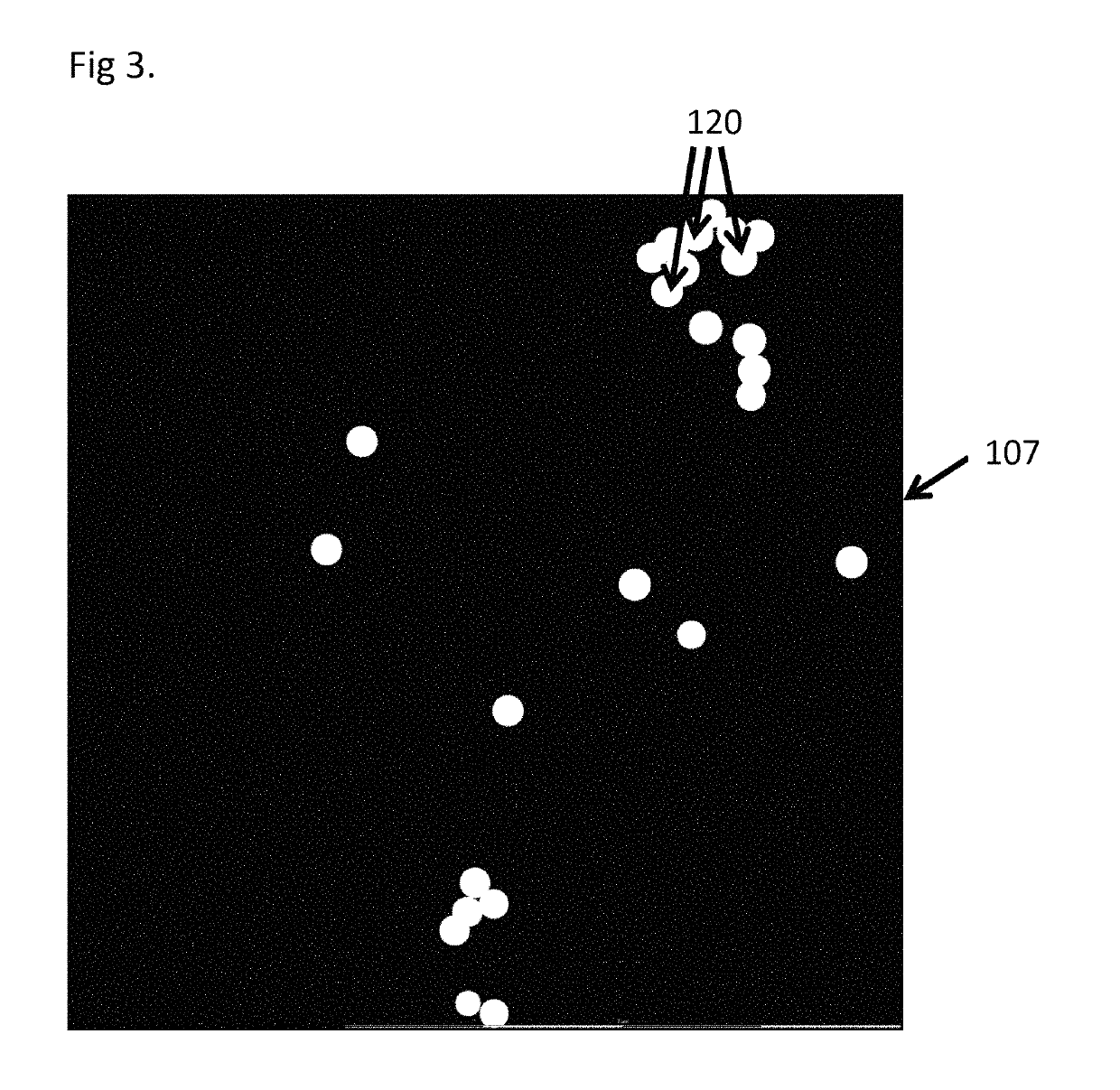Method for quantification of purity of sub-visible particle samples
a technology of visible particles and quantification methods, which is applied in the direction of material analysis using wave/particle radiation, instruments, nanoparticle analysis, etc., can solve the problems of inaccurate quantitative assessing of purity currently available methods, and achieve the effect of effective and reliabl
- Summary
- Abstract
- Description
- Claims
- Application Information
AI Technical Summary
Benefits of technology
Problems solved by technology
Method used
Image
Examples
Embodiment Construction
[0021]The present invention describes a unique method for quantitatively measuring the purity of a sample containing sub-visible or nano-particles (that may, for example, have a size of about 100 nm) in solution based on an automatic and objective image analysis of electron microscopy images of the sample. The sample may, for example, be liquid, dissolved solid or powder samples.
[0022]Negative stain transmission electron microscopy images may be used. In general, the purity measure of the present invention is, preferably, the area ratio of primary particles to non-primary particles (including small debris as well as large debris clusters). The principle steps of the method of the present invention are:[0023]1. Placing a sample to be analyzed in an electron microscope to obtain an electron microscopy image of the sample;[0024]2. Enhancing edges (such as fine edges) of primary particles in the image that have a size that is typical for the primary particle;[0025]3. Specifically detect...
PUM
| Property | Measurement | Unit |
|---|---|---|
| size | aaaaa | aaaaa |
| purity | aaaaa | aaaaa |
| electron microscope | aaaaa | aaaaa |
Abstract
Description
Claims
Application Information
 Login to View More
Login to View More - R&D
- Intellectual Property
- Life Sciences
- Materials
- Tech Scout
- Unparalleled Data Quality
- Higher Quality Content
- 60% Fewer Hallucinations
Browse by: Latest US Patents, China's latest patents, Technical Efficacy Thesaurus, Application Domain, Technology Topic, Popular Technical Reports.
© 2025 PatSnap. All rights reserved.Legal|Privacy policy|Modern Slavery Act Transparency Statement|Sitemap|About US| Contact US: help@patsnap.com



